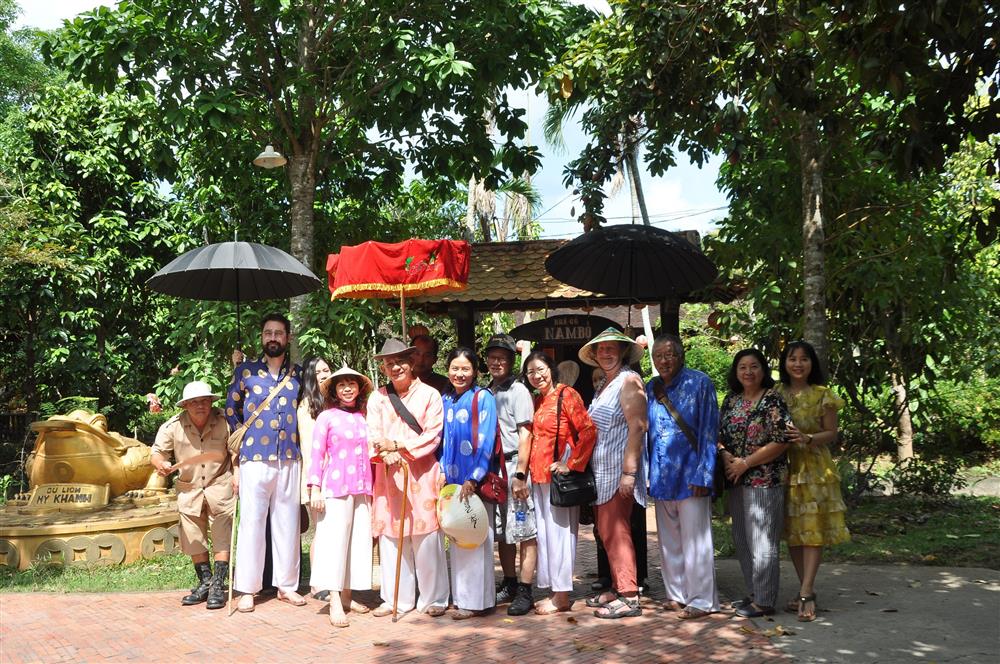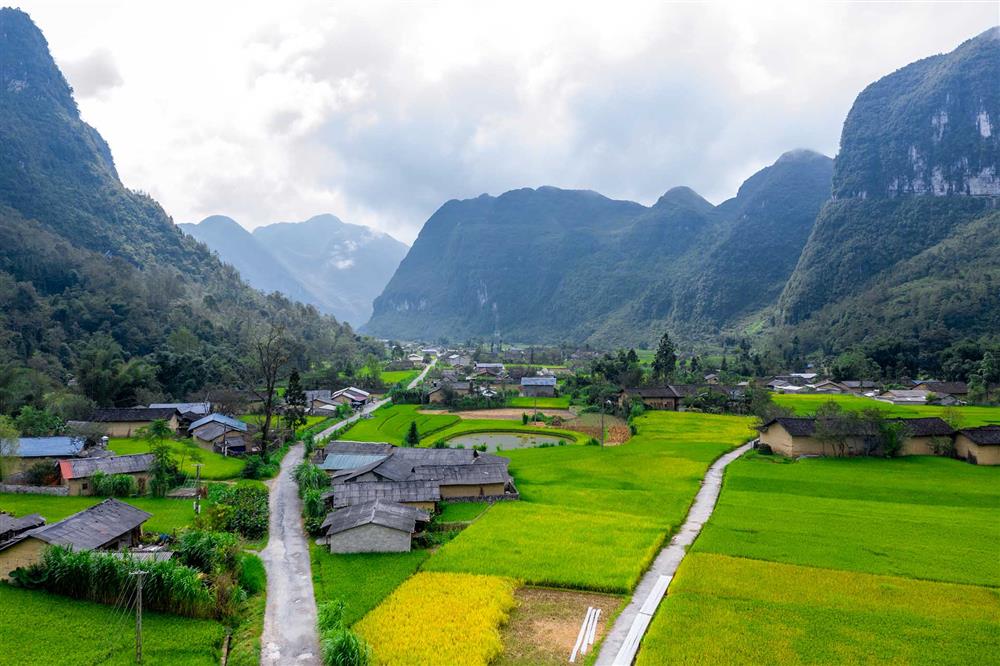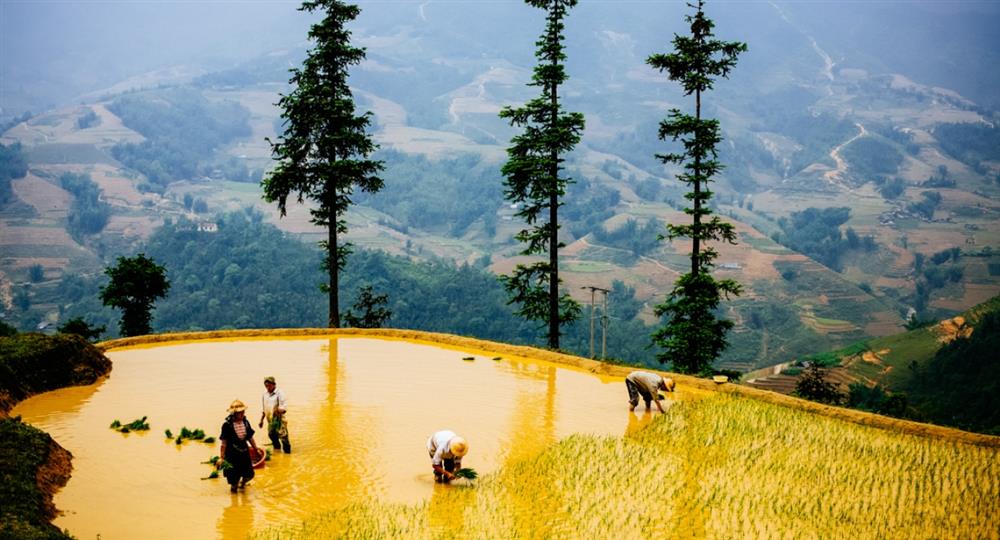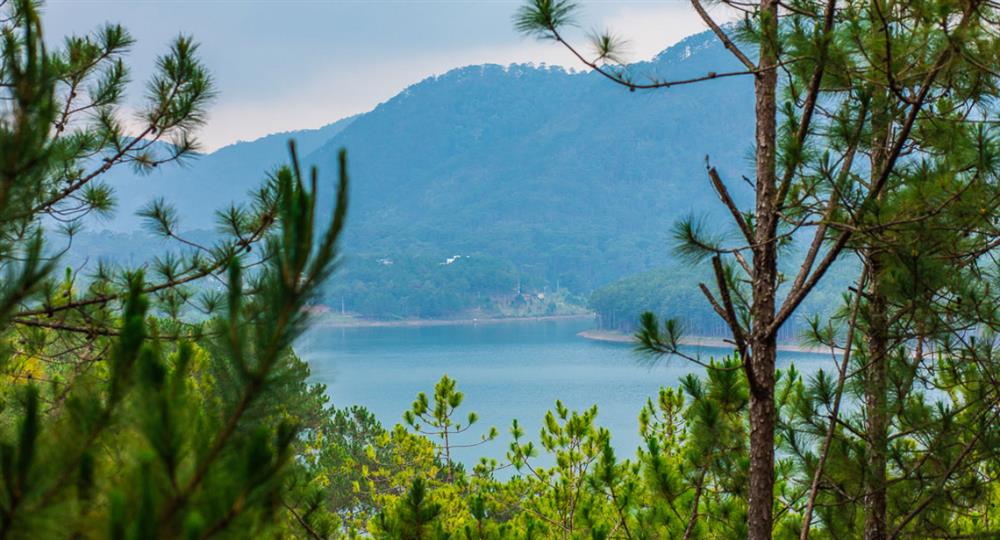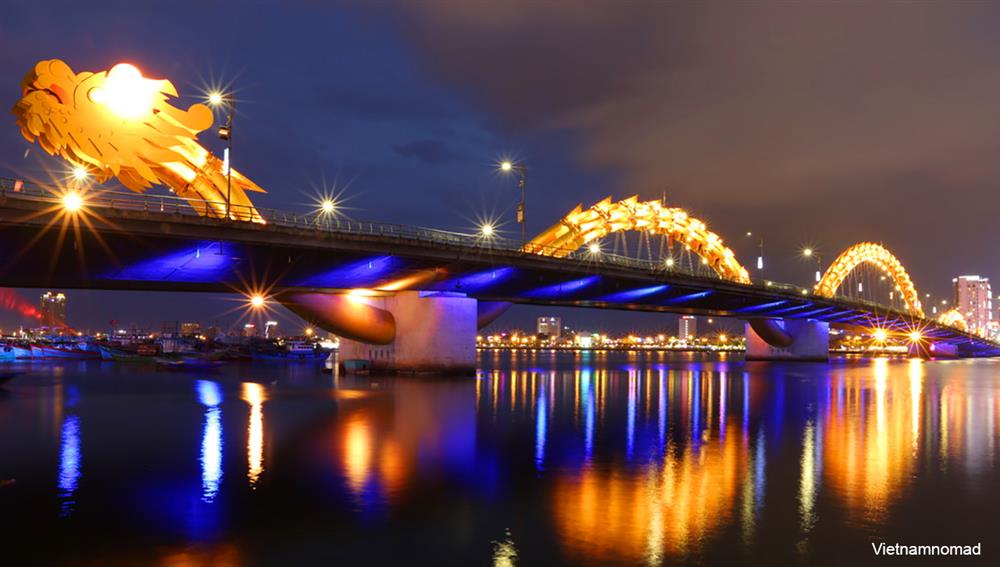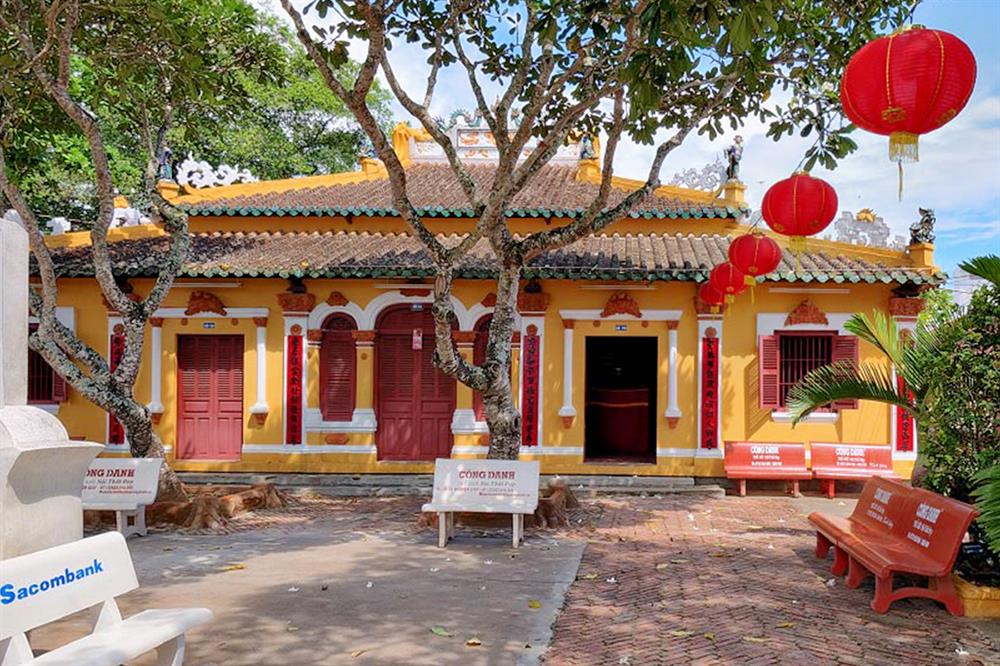Location
Binh Thuy Temple is located at location of Binh Thuy District, Can Tho City. The communal house is close to the residential area surrounded by a quadrangle fence: the North side is about 200 meters from the Hau river's bank, the East side is the bank of Binh Thuy canal, and the South side is close to Le Hong Phong street. From the center of Can Tho city, visitors could move along Nguyen Trai street, then all the way to Cach Mang Thang Tam street and cross Le Hong Phong street about 5 kilometers, you will reach Binh Thuy Temple.
Location: 46/11A Le Hong Phong St., Binh Thuy Ward, Binh Thuy District, Can Tho.
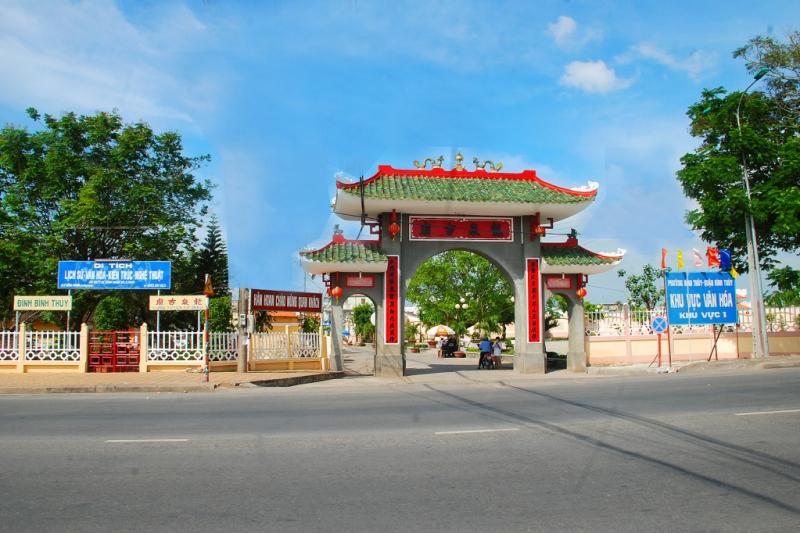
In front of Binh Thuy Temple gate

Located next to the peaceful and poetic river
How to go
Binh Thuy Temple is located right at the foot of Binh Thuy bridge on Highway 91 and it also opposite the entrance to Binh Thuy market. It is about 6 kilometers from Can Tho city center.
There are many means of operation to meet the needs of tourists such as motorbike, car or you can also get there by taxi about 5 minutes from the center. Therefore, visitors can easily move to the communal house.
The temple will be open to visitors from 07:30 - 10:30 and 13:30 - 17:30 on weekdays.
Ticket price to visit the temple is free.
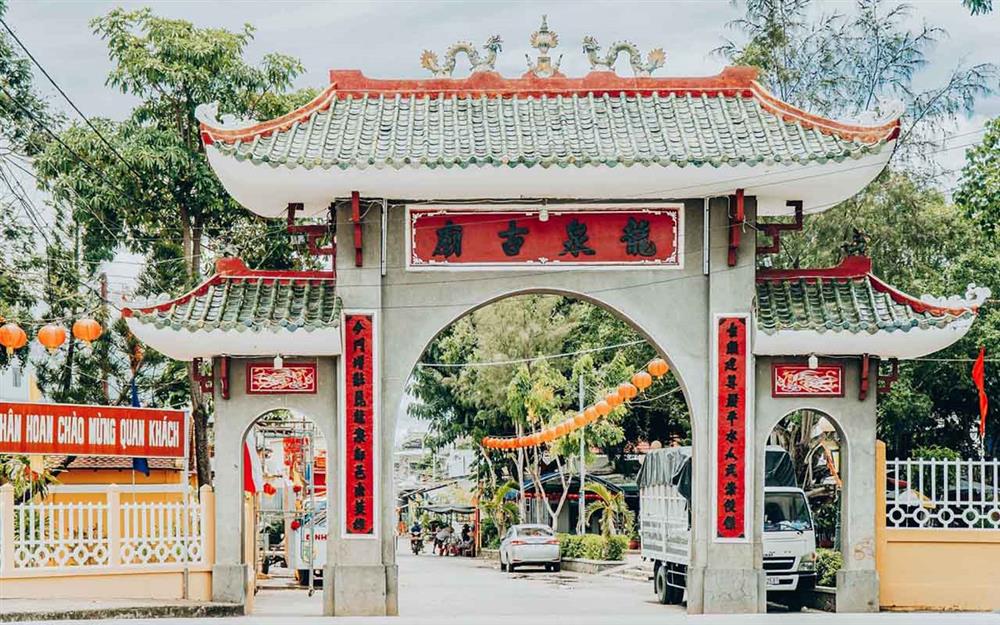
Binh Thuy Temple gate
Introduction to Binh Thuy Temple
Binh Thuy Temple is also known as Long Tuyen Ancient Temple, a symbol of the religious culture of people in Can Tho. This is also considered as a historical work of the people here since the reclamation to the Southwest region around the 19th century. Along with the timeline and history, the temple still retains its ancient features, which is also a feature of the Southern river region.
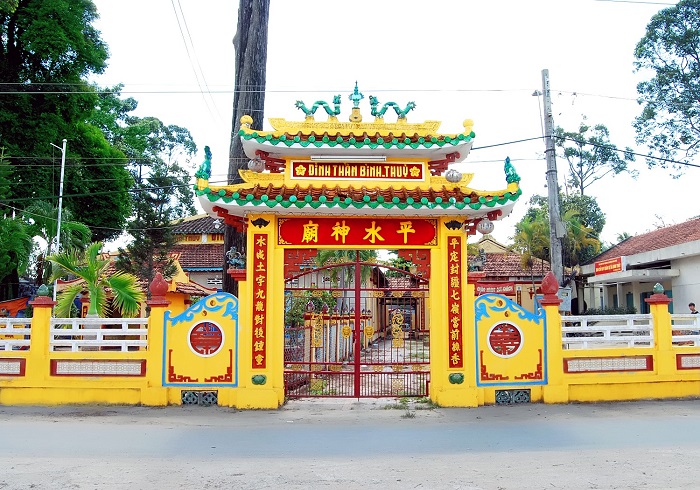
Binh Thuy Temple is also known as Long Tuyen Ancient Temple
History
- According to historical records, Binh Thuy Temple was built in 1844. The total area is about 500,000 square meters 2 in front of Binh Thuy canal (which means peaceful river).
- In 1852, King Tu Duc officially ordained this temple. Initially, when newly built, the temple was built of earth, bamboo, wood and roofed with leaves.
- In 1853, the temple was rebuilt for the second time to celebrate the royal ordination of King Tu Duc. This time the place is covered with a spacious tiled roof.
- In 1908, the temple was renamed Long Tuyen. Because Binh Thuy canal is shaped like a dragon, the locals here also call it Long Tuyen communal house or Long Tuyen Co Mieu.
- By 1979 the temple was returned to its original name, Binh Thuy Temple and the name is used until these days.
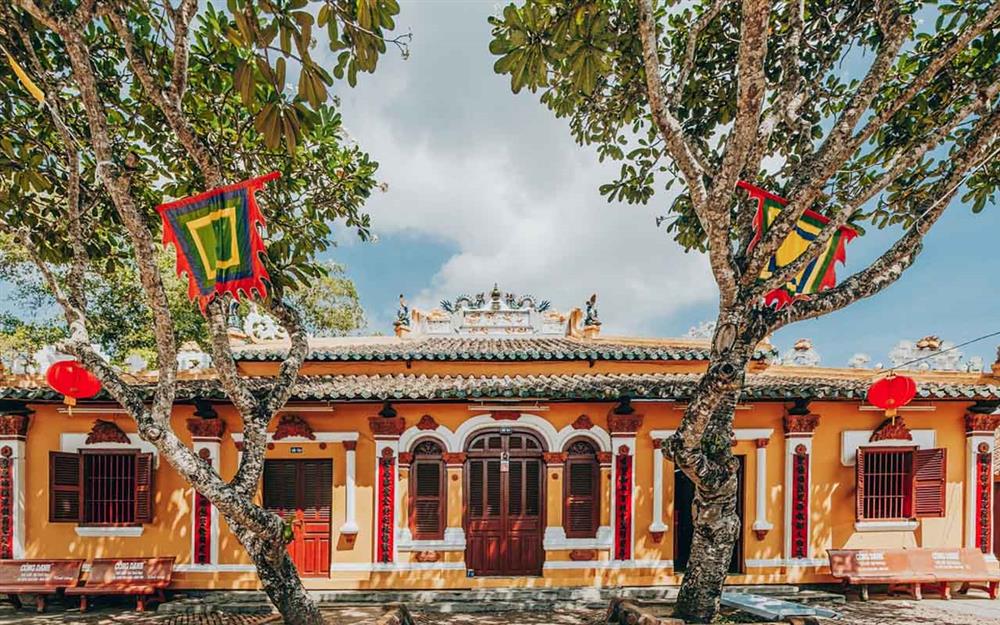
Binh Thuy Temple with a long process of formation and development
Worship
- Unlike other temples, Binh Thuy Temple is a place to worship the earth god who rules the land; along with the mandarins and heroes who have contributed to the country.
- The special feature of the temple is after April 30, 1975, this place officially established an altar to worship and commemorate the great President Ho Chi Minh.
- Outside are two shrines to worship Nong and Tiger gods.
- In addition, there are altars to the gods of the forest and gods of canals near the gate.
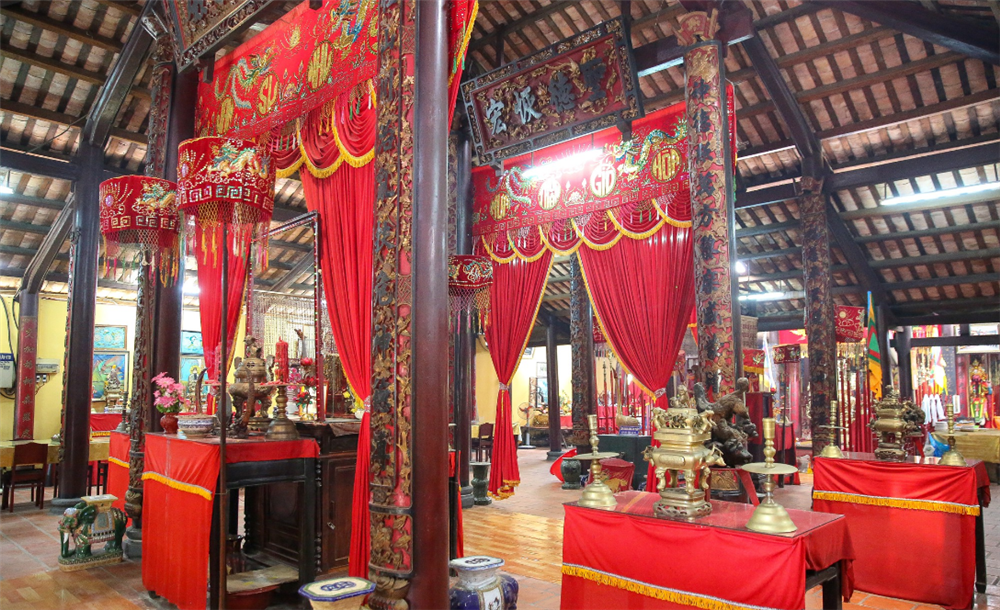
Worship at the temple
Architecture
- Binh Thuy Temple is known for its unique architecture with long-standing cultural features. The whole project includes: main gate, side gate, main communal house, hamlet establishment, shrine... The main communal area consists of 5 houses. The hamlet is the space for preparing offerings, where there is a scientifically arranged theater.
- The roofs of the temple are carved with the image of a dragon holding a pearl. The columns are carved with intricate patterns of peonies and dragons, imbued with ancient dragons. The main halls are built in connection with the auxiliary compartments in the style of upper floors and lower floors.
- Although built in the early 20th century, the architecture of the temple still retains many traditional architectural elements of the nation. The temple still retains the carvings and decorative motifs close to the national art. The art of wood carving here is very delicate and vivid. This is not only a place to keep the original traditional history. It is also a place to preserve traditional cultural values in the South-western rivers.
- Along with other traditional cultural activities, this ancient temple has created a separate identity of the village temple in a newly discovered land in the past. Today, it is still well preserved, restored and protected..
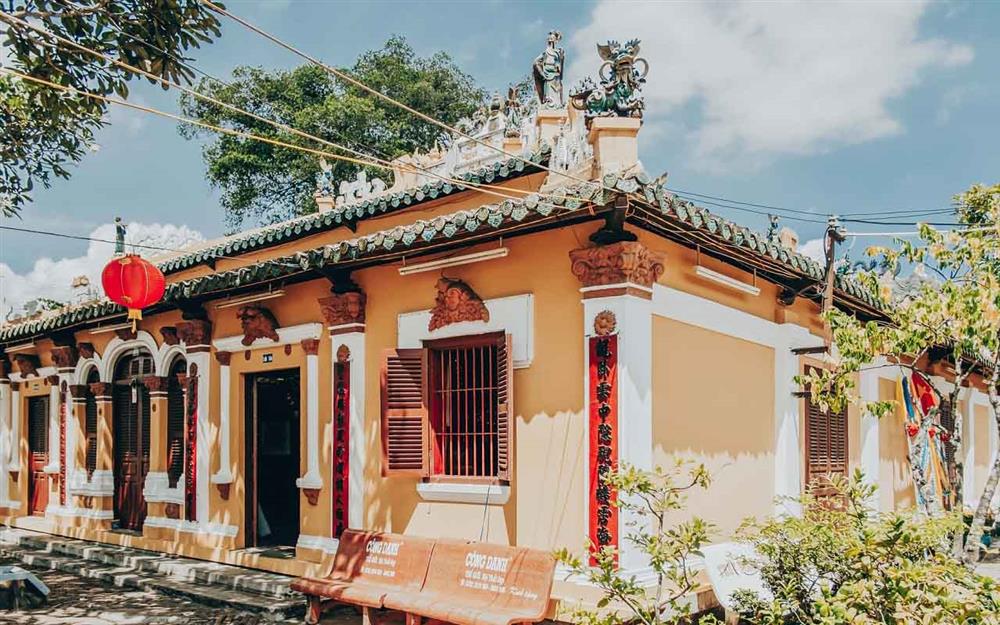
Inside the temple
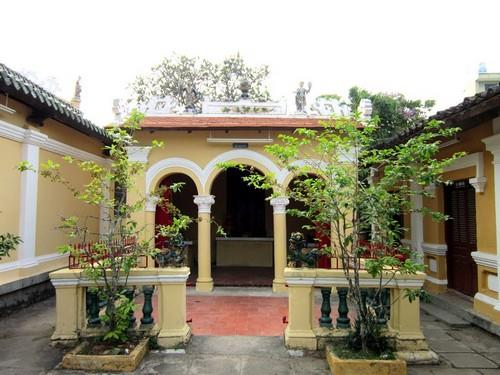
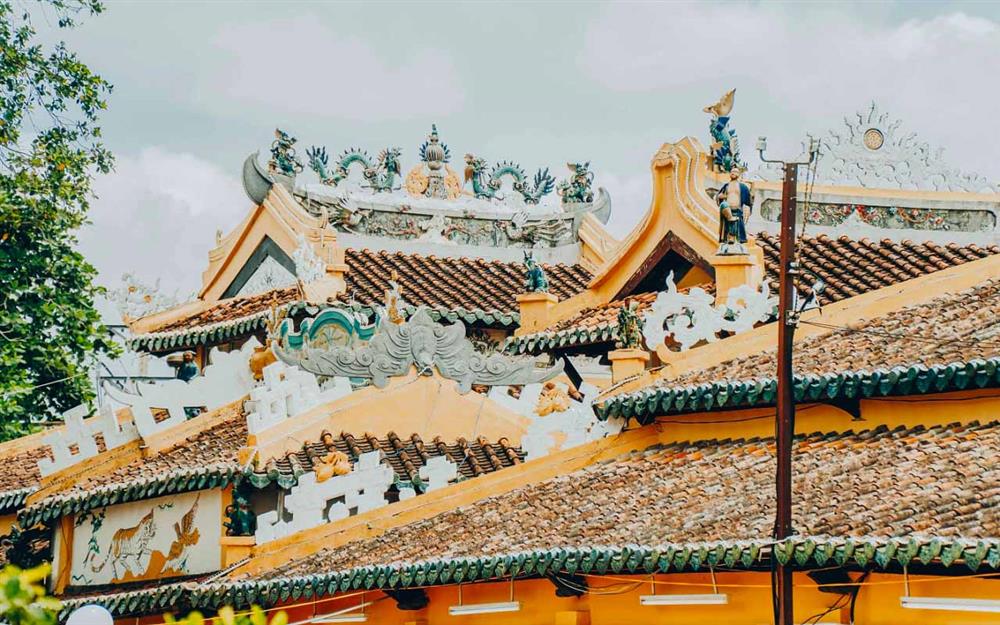
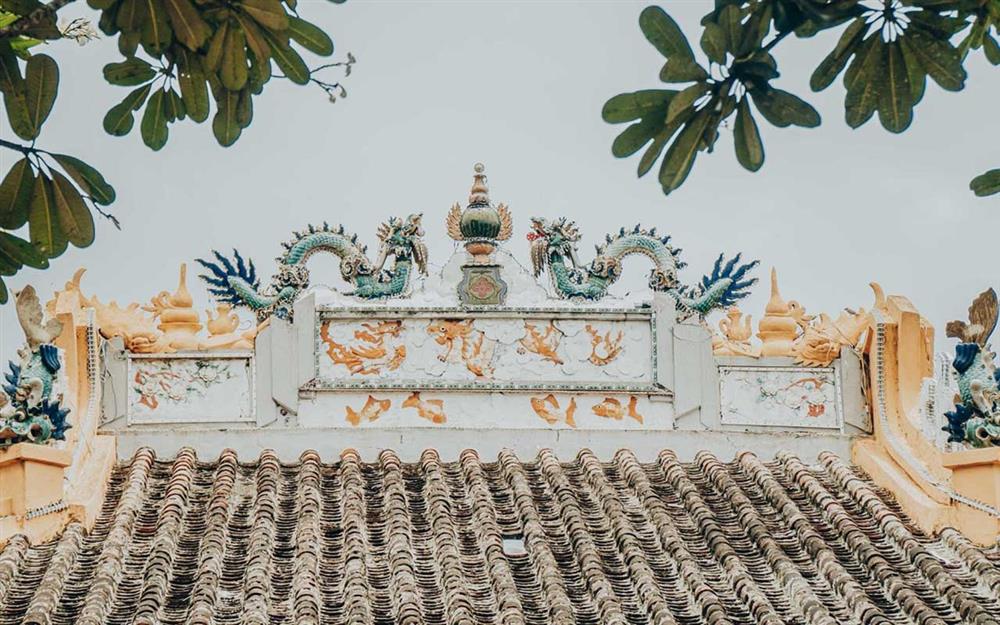
Exquisitely carved tile roof
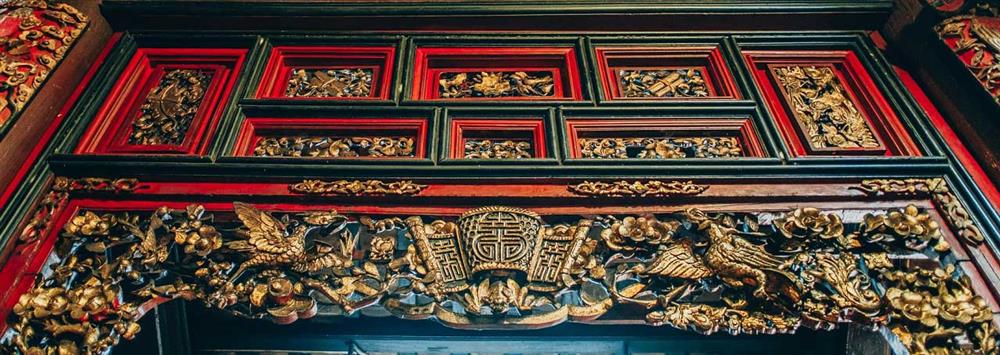
Delicately carving technique
Festival
Festivals at Binh Thuy Temple include:
- Ky Yen Thuong Dien Festival (from the 12th to the 14th of the 4th lunar month every year): Offering Bon Canh Than Hoang (the earth god who rules the land) after the harvest season. This festival includes many rituals such as praying for peace, offering sacrifices, carrying the gods on the dragon and phoenix carriages, asking for the gods, singing boi, etc.
- Ky Yen Ha Dien Festival (December 14th and December 15th of the lunar calendar every year): The introduction festival is attended by a large number of people with many interesting activities. Many customs and folk games are introduced in parallel with the festival: Tug of war contest, boat racing, folk performing arts, Boi singing, Tieu singing, cooking contest, duck release, etc.
The festival attracts a lot of visitors to participate by unique ritual forms and to pray for good weather and peace for the people here. More than 175 years, temple festivals in Binh Thuy district have always been associated with Binh Thuy Temple (Long Tuyen Co Mieu), a typical living evidence in Can Tho still exists to this day.
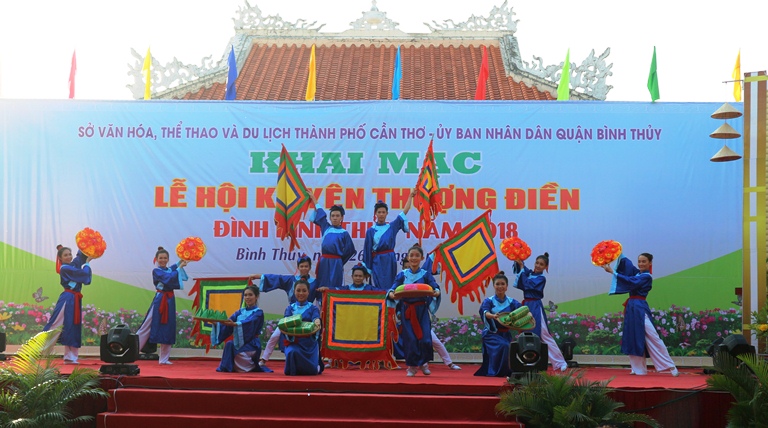
The opening ceremony of the Ky Yen Thuong Dien Festival
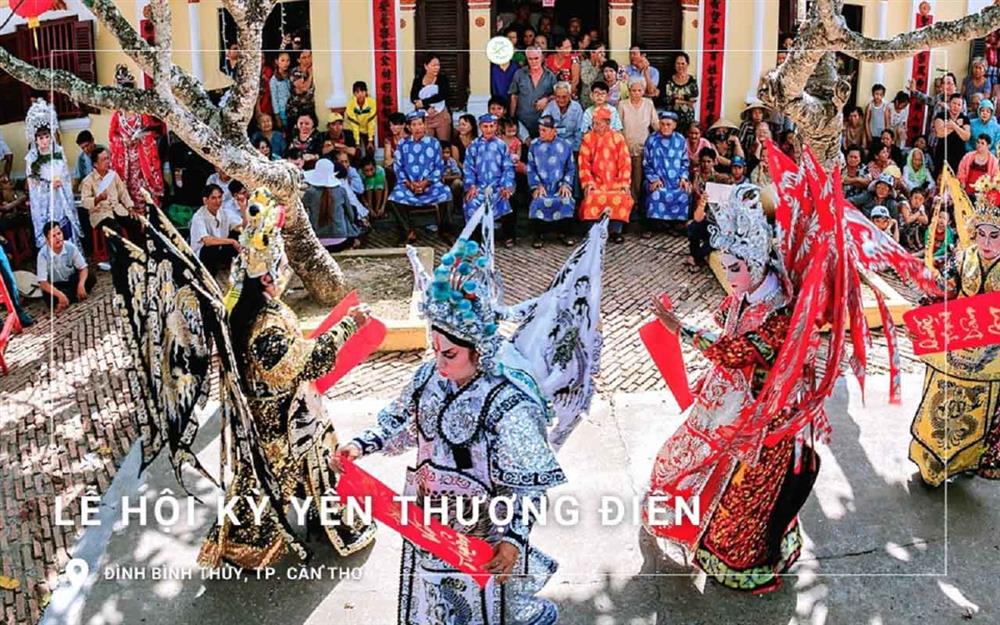
Festival in Binh Thuy Temple
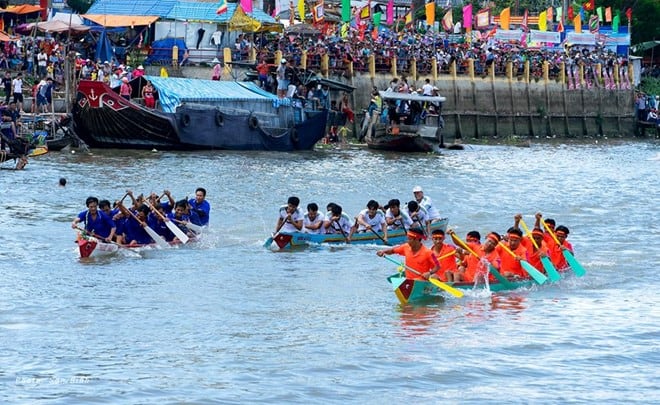
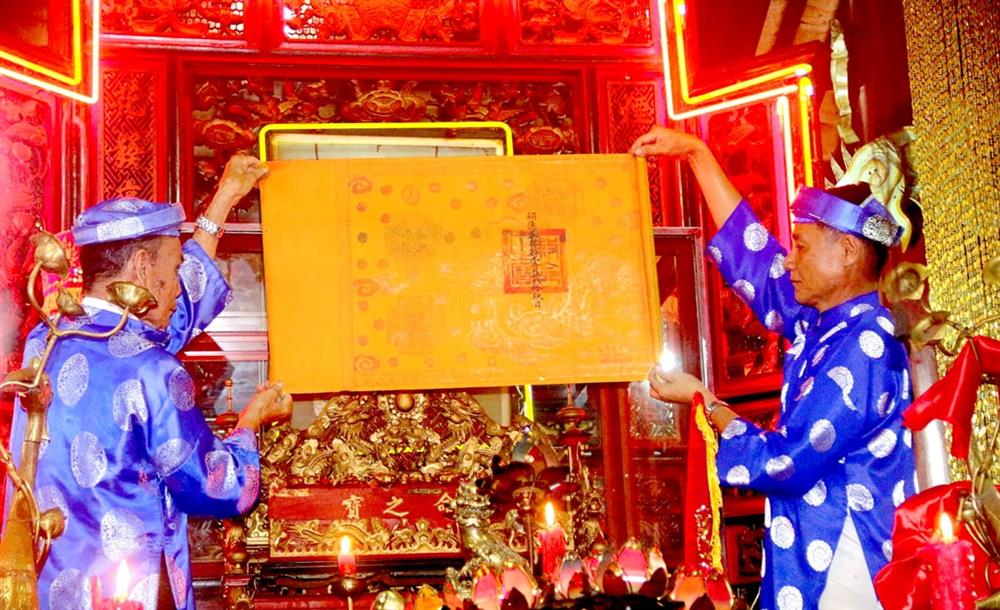
Some activities take place on festivals in Binh Thuy Temple
When is the time to travel to Can Tho
Can Tho area is divided into 2 distinct seasons: rainy season and dry season.
- The dry season usually takes place from December to April.
- The rainy season will take place from May to November.
In general, when the climate of Can Tho is mild and pleasant, each season has its own beauty. However, to enjoy all the beauty of Can Tho as well as have the most enjoyable travel trip, visitors should choose to go in the dry season. At that time, you can visit many places, includes Binh Thuy communal house, and don't have to worry about rainstorms, storms that suddenly come and affect your trip.
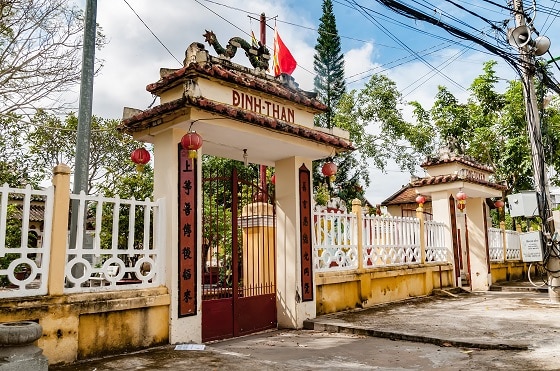
Binh Thuy Temple in a sunny day
Sources: Photos and information in the article are collected and compiled from different sources.












